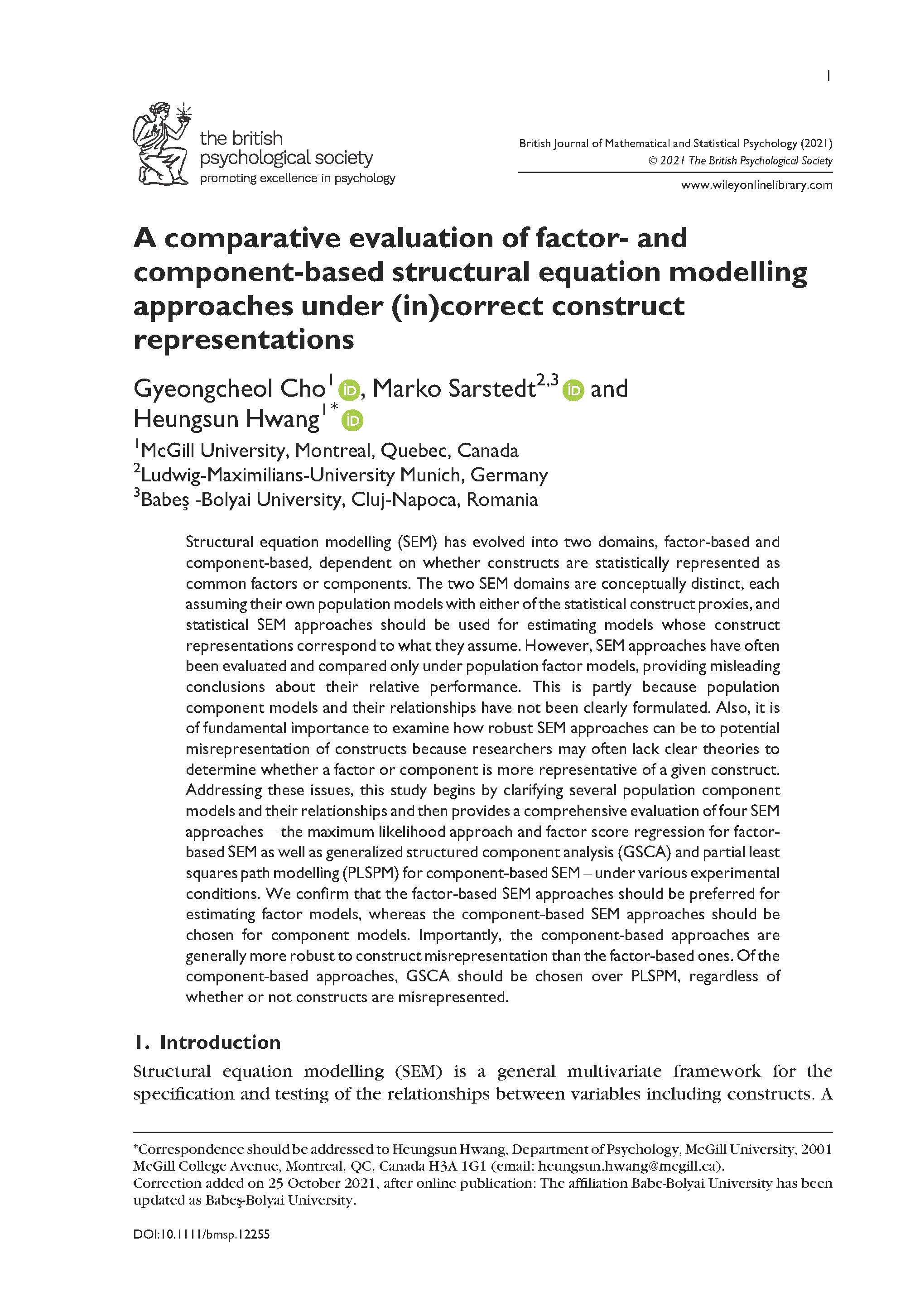|
|
|
Cho, G., Sarstedt, M. & Hwang, H. (2022) British Journal of Mathematical and Statistical Psychology [Core Economics, Q1]
Autor:
Ovidiu Ioan Moisescu
Publicat:
18 Octombrie 2021
Cho, G., Sarstedt, M. & Hwang, H. (2022) A comparative evaluation of factor- and component-based structural equation modelling approaches under (in)correct construct representations. British Journal of Mathematical and Statistical Psychology, 75(2), 220-251.
DOI: https://doi.org/10.1111/bmsp.12255
✓ Publisher: Wiley
✓ Categories: Psychology, Experimental; Mathematics, Interdisciplinary Applications; Statistics & Probability
✓ Article Influence Score (AIS): 1.652 (2022) / Q1 in all categories
Abstract: Structural equation modelling (SEM) has evolved into two domains, factor-based and component-based, dependent on whether constructs are statistically represented as common factors or components. The two SEM domains are conceptually distinct, each assuming their own population models with either of the statistical construct proxies, and statistical SEM approaches should be used for estimating models whose construct representations correspond to what they assume. However, SEM approaches have often been evaluated and compared only under population factor models, providing misleading conclusions about their relative performance. This is partly because population component models and their relationships have not been clearly formulated. Also, it is of fundamental importance to examine how robust SEM approaches can be to potential misrepresentation of constructs because researchers may often lack clear theories to determine whether a factor or component is more representative of a given construct. Addressing these issues, this study begins by clarifying several population component models and their relationships and then provides a comprehensive evaluation of four SEM approaches – the maximum likelihood approach and factor score regression for factor-based SEM as well as generalized structured component analysis (GSCA) and partial least squares path modelling (PLSPM) for component-based SEM – under various experimental conditions. We confirm that the factor-based SEM approaches should be preferred for estimating factor models, whereas the component-based SEM approaches should be chosen for component models. Importantly, the component-based approaches are generally more robust to construct misrepresentation than the factor-based ones. Of the component-based approaches, GSCA should be chosen over PLSPM, regardless of whether or not constructs are misrepresented.

inapoi la stiri  vezi evenimentele
vezi evenimentele  home
home 
|